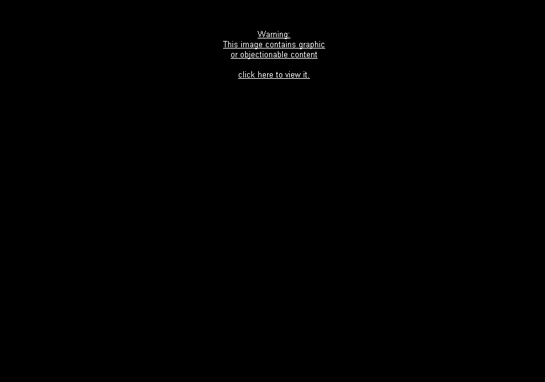Let’s see the photo already

It might be fair to say that every conceivable photograph will be taken or has been taken already. What is more, every conceivable photo will then be posted on the internet. If anything that’s what we’ve learned so far. Whether this is in fact good or bad is an entirely different matter - that’s where things get interesting, of course. So for me the question is not whether or not a photograph of the corpse of Bin Laden should be released. Do we really want to pretend that it’s not going to happen? Do we really want to believe that somehow a photo might not find its way onto the internet? (more)
“The main argument for releasing a photograph of the punctured scalp of our enemy is that it will provide proof that bin Laden really is dead. In other words, seeing is believing. But does anyone really believe that any more? Believing is believing. People who want, or need, to believe that bin Laden wasn’t shot dead will have no difficulty believing that a picture of his cadaver is a fake, a simple propaganda trick. The release of Obama’s long-form birth certificate didn’t put an end to birtherism, so why would the release of bin Laden’s autopsy video put an end to deatherism?”
This all sounds convincing, but it misses the point. The reason why the birthers have managed to keep up what amounts to little more than a borderline nuts and easily refutable conspiracy theory is not grounded in the claim itself. It’s grounded in the fact that - let’s face it - the majority of the GOP (including most of their most prominent members, plus Fox “News”) have made zero effort to distance itself from it.
Of course, releasing a photograph of the corpse of Bin Laden will not convince those who want to believe he is still alive (or whatever else). But releasing the photograph cannot and must not and in fact will not be aimed at the lunatic fringe. There will always be those who claim it’s doctored, just like there are those that claim the CIA shot President Kennedy, that the moon landings were fake etc. Whatever.
Instead, releasing the photo will be aimed at us. All of us. We have created this culture where every photo finds its way onto the internet, where there is a photo for everything. So we might as well face the music, whether we like it or not.
It’s not like we never get to see photos of mangled, destroyed corpses or of people with terrible injuries. Quite the contrary. Just go to The Big Picture and start looking. The photos are typically “hidden” under a black frame with text that says “Warning: This image contains graphic or objectionable content. click here to view it” (here’s a rather tame example). We see that stuff all the time.
I’m not saying that’s a good thing. I don’t think it is. But it seems rather silly to have a long debate about a photo of one corpse when photojournalists produce images of corpses all the time, just a mouse click away. And we can bemoan the fact that there are photos of everything now, but the toothpaste is out of the tube. That’s just the way it is. Denial is not a good way to deal with it.
Here’s the thing: believing might be believing, but seeing is not understanding. That’s the crux: Seeing is not understanding. Why are we talking about seeing as if it was?
What is more, refusing to see also is not the same as understanding. It might sound nobler, because we all know that we really want to look.
Why are we still treating photography as if all it took to understand something was to make a decision about whether to look at a photograph or not? Shouldn’t we instead be talking about how we produce understanding out of photographs?
This is why the Abu Ghraib photos still feel so weird: We saw them, and then we pretended there was no problem. Only a few bad apples. Nothing to see here, folks. We saw those images, and we refused to understand what they told us.
In the context of the Bin Laden photos shouldn’t we be talking about how we can move on, how we can get out of out paranoid post-9/11 mindset? The photo is not what is going to stand in the way of that. In fact, I’m even tempted to think that looking at the photograph will bring home that point even more forcefully.
So let’s see that photo already before it gets leaked. I don’t want to find it some day, lurking in some scummy corner of the web. It looks like it’s that final piece missing, the visual - and appropriately violent - bookend of an era. Let’s see the destroyed skull of the terrorist mastermind. Those who want to gloat will gloat. Those who refuse to gloat will refuse to do so. Those who will take the photo as a sign of some triumph will do so. The rest of us have a chance to, in Philip Gourevitch’s words, “put that era behind us.” Let’s face it, the photo is part of that era.